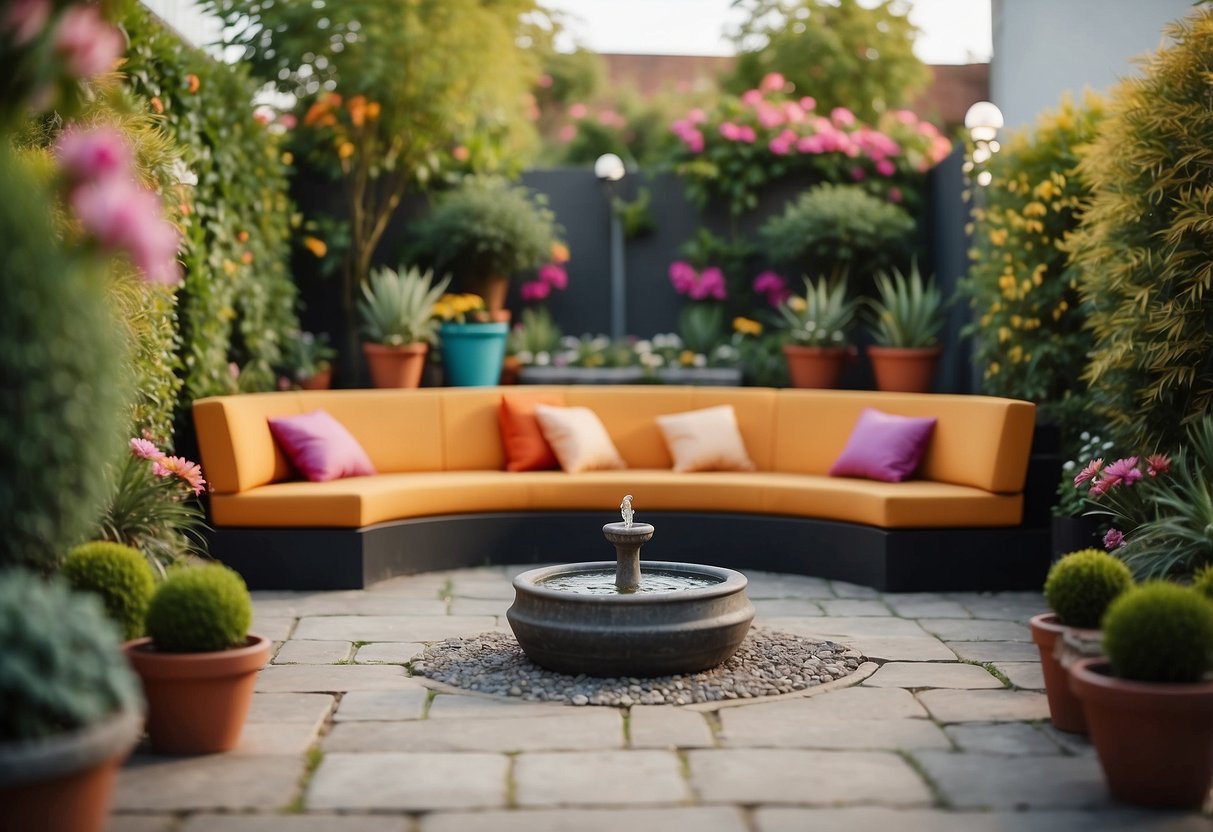Small Astroturf Garden Ideas: Transform Your Outdoor Space
Looking to enhance your small garden with something low-maintenance and stylish? Artificial grass could be the perfect solution for you. Not only does it require minimal upkeep, but it also has a neat, green look all year round.

Curious about how to best use artificial turf in your small garden space? Whether it’s for a cozy spot to relax or a play area for the kids, there are plenty of creative ideas to explore. This article will guide you through inspiring ways to make the most of your limited outdoor space with AstroTurf.
Benefits of a Small Astroturf Garden

Choosing a small astroturf garden brings some clear advantages. It offers low maintenance, stays green all year, and even has certain environmental benefits.
Low Maintenance
One great thing about astroturf is that it requires very little upkeep. You don’t need to worry about mowing, watering, or fertilizing. This saves you a lot of time and effort. Plus, you’ll save on lawn care tools and services.
Astroturf doesn’t attract pests like natural grass. That means you won’t need to use pesticides, which is good for your garden and your wallet. Cleaning the turf is also simple, usually needing just a quick brush or rinse.
Year-Round Greenery
Astroturf looks green and vibrant no matter the season. Unlike natural grass that can turn brown and patchy, astroturf stays lush through winter, summer, and in between. This consistent appearance can enhance your outdoor space and keep it looking inviting all year round.
You don’t have to worry about bald spots or mud when it rains. Your garden maintains a clean and pristine look, perfect for hosting outdoor events anytime. This year-round beauty makes it great for those who love a well-kept garden without seasonal hassles.
Environmental Impact
Astroturf can have a positive environmental impact. Since it doesn’t need watering, especially during dry seasons, it conserves water. Over time, this can lead to significant water savings.
Without the need for pesticides and fertilizers, you reduce chemical runoff that can harm local wildlife and waterways. Additionally, astroturf lasts for many years with proper care, reducing the waste associated with replanting natural grass frequently.
By choosing astroturf, you contribute to environmental sustainability while enjoying a beautiful, low-maintenance garden. It’s an eco-friendly option that pairs well with a busy lifestyle.
Design Tips for Small Astroturf Gardens

Creating a beautiful and functional small astroturf garden involves picking the right turf, using potted plants creatively, and making the most of your space. These tips will help you achieve a vibrant and low-maintenance garden.
Choosing the Right Astroturf
When designing a small astroturf garden, the first step is to choose the right type of astroturf. Look for turf that mimics the look and feel of natural grass. This will help your garden look more appealing. Consider the material’s durability since you’ll want something that can withstand foot traffic and varying weather conditions. Opt for high-quality astroturf with a strong backing to ensure longevity.
Pick turf with UV protection to keep it from fading in the sun. Also, think about the height of the grass blades. Shorter blades are easier to clean and maintain, which is ideal for small spaces.
Incorporating Potted Plants
Potted plants are a great way to add life to a small astroturf garden. Use colorful pots to create visual interest. Mix different types of plants like flowers, succulents, and small shrubs to bring variety to your garden. Place the pots strategically across the garden to make the area look bigger.
You can use tall planters for vertical interest. This helps draw the eyes upward, making the garden feel more spacious. Hanging planters or wall-mounted plant holders are also effective in maximizing plant variety without taking up ground space.
Maximizing Space Efficiency
To make the most of a small garden, use multi-functional furniture such as benches with storage underneath. This keeps your space tidy and functional. Arrange the furniture in ways that do not obstruct pathways and allow for smooth movement around the garden.
Incorporate built-in seating against the garden’s edges to save space. Use decorative elements like small fountains or garden statues to add charm without cluttering the area. Mirrors can be placed on walls to create an illusion of a larger space, enhancing the overall garden experience.
Use low-profile lighting fixtures to illuminate the garden at night while saving space. Solar-powered lights are a great option that is both efficient and environmentally friendly.
Care and Maintenance

To keep your small astroturf garden looking pristine, you need to regularly clean it, prevent weed growth, and address drainage issues.
Regular Cleaning
Regular cleaning helps your astroturf stay fresh and vibrant. Use a broom or leaf blower to remove debris like leaves and twigs. For stubborn dirt, a hose with moderate water pressure works well. Avoid harsh chemicals as they can damage the turf fibers. Occasionally, you might want to disinfect your turf, especially if pets use it. A mixture of water and mild soap or vinegar can help sanitize without causing harm.
Preventing Weed Growth
Weeds can sneak through the edges or seams of your astroturf. To prevent this, ensure that the installation includes a high-quality weed barrier. Inspect your turf often for any signs of weed growth. If you spot weeds, remove them immediately to stop them from spreading. Applying a safe, water-based weed killer can also help in keeping weeds at bay.
Addressing Drainage Issues
Proper drainage is crucial to avoid water pooling on your astroturf. During installation, ensure that the base is even and has the proper slope for water runoff. Inspect the turf periodically, especially after heavy rain. If you notice water pooling, use a rake to adjust the surface. In case drainage problems persist, consider adding a layer of crushed stone or installing a drainage system underneath the turf.







